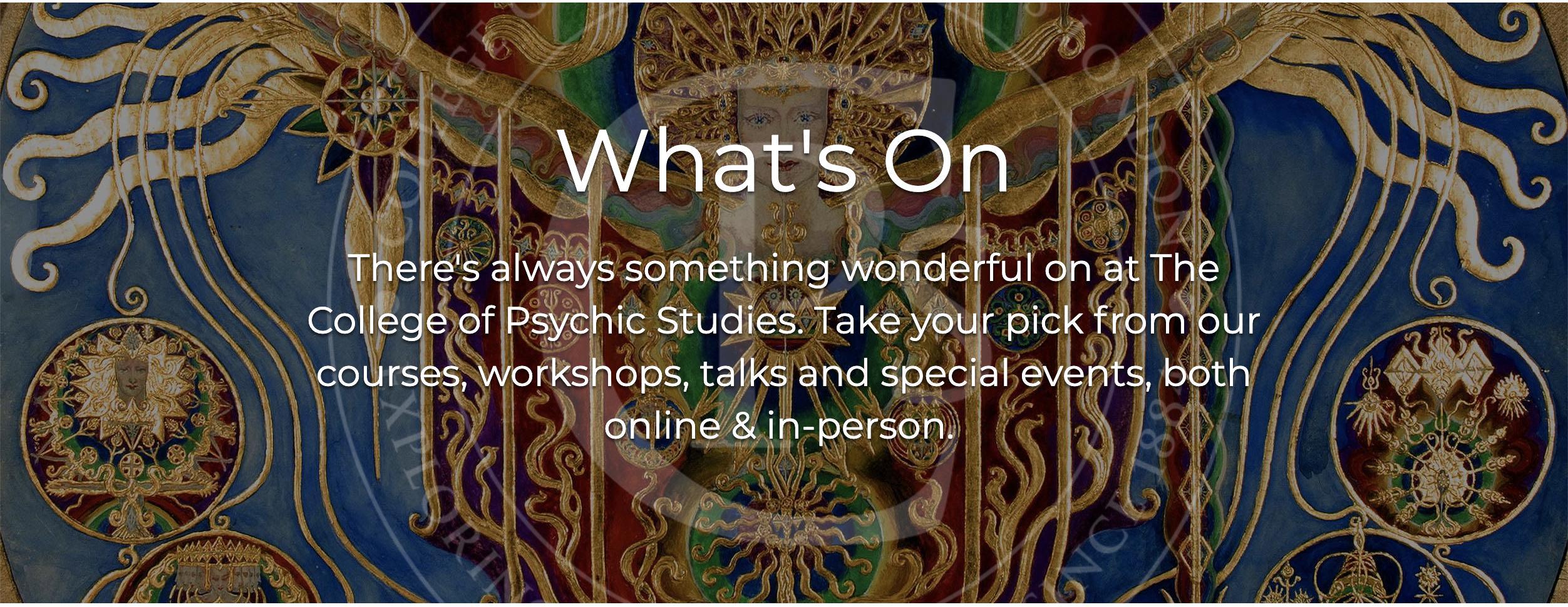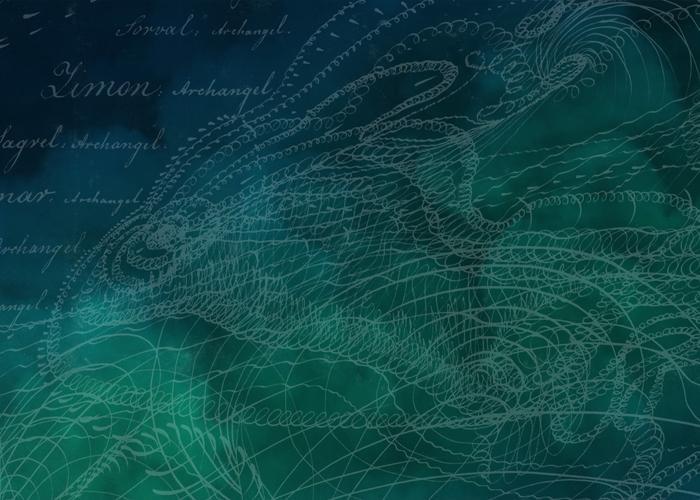We embrace and celebrate all forms of divination and the esoteric at The College of Psychic Studies. Whether your divinatory tool of choice is tarot, the black obsidian mirror, tea leaves, numerology or palmistry, you'll likely discover something to do with it in the College shop. Another thing that you'll find in the shop - and it's a divination tool that is often overlooked - is the runic oracle. This appealing little pouch of engraved stones that sits alongside our tarot and lenormand cards has a long and varied history. We delve a little deeper, and guide you on how to cast your own runes for divination.
Runes are ancient symbols that originated in Germanic and Norse cultures. They were primarily used for writing, divination, and magic. There are three branches of the runic alphabet that you may be familiar with: Elder Futhark, Younger Futhark and Anglo-Saxon Futhorc. Let's take a closer look at these three…
1. Elder Futhark / Fuþark
In Norse mythology, Odin, the All-Father, discovered the runes after hanging from Yggdrasil (the World Tree) for nine days and nights. Through this ordeal, Odin gained wisdom and shared the knowledge of runes with humanity. This is the oldest runic system of the three, Elder Futhark. Elder Futhark was used across Germanic Europe and early Scandinavia from around 150CE to around 800CE. It consists of 24 runes, based on a Proto-Germanic language, which is an ancestor of later Germanic languages. This runic system was used primarily for inscriptions on artefacts such as weapons, jewellery, and runestones, as well as for ritual purposes.
Examples of Elder Futhark:
- Fehu (ᚠ): Wealth, abundance
- Uruz (ᚢ): Strength, endurance
- Thurisaz (ᚦ): Chaos, protection
- Ansuz (ᚨ): Communication, knowledge
- Raidho (ᚱ): Travel, journey
- Kenaz (ᚲ): Creativity, insight
2. Younger Futhark / Fuþark
Developed from Elder Futhark during the Viking Age between 800-1100CE, Younger Futhark, reflects changes in the spoken language over time. The 24 runes of Elder Futhark became 16 runes as a phonetic simplification of Old Norse. It was carved on runestones and used for magic, rituals, and memorial inscriptions.
Examples of Younger Futhark:
- Ur (ᚢ): Strength
- Týr (ᛏ): Justice, law
- Bjarkan (ᛒ): New beginnings
3. Anglo-Saxon Futhorc / Fuþorc
Expanded from Elder Futhark to better represent the sounds of Old English, Anglo-Saxon Futhorc contains 28–33 runes, making it the largest of the three systems. It was used in Anglo-Saxon England and Frisia (modern Netherlands and northern Germany) for writing, protective charms, inscriptions, and magical uses.
Examples of Anglo-Saxon Furthorc:
- Ac (ᚪ): Oak, strength
- Peorð (ᛈ): Mystery, fate
- Ior (ᛡ): Transformation
With the Christianisation of England and the introduction of the Latin alphabet, the use of the Anglo-Saxon Futhorc gradually declined. By the 11th century, Latin fully replaced runes, although some persisted in folklore and magical practices.
Which runes should I use for divination?
It's good to know we have a choice! Just as with tarot, we can choose Arthur Edward Waite / Pamela Colman Smith's deck, or Aleister Crowley / Lady Frieda Harris' deck, we have two options with our runes as well.
The 24 Elder Futhark runes are the most popular runes today for divination. These are the runes most referred to when discussing runes as a divination tool. So Elder Futhark is ideal if you seek a balanced, well-rounded rune system for divination. These are the runes that we stock in the College shop.
However, many prefer to use the 16 Younger Futhark runes. If you're drawn to Viking spirituality or Norse mythology, these are the runes for you.
How to cast runes for divination
Each rune holds a unique energy and is associated with specific meanings, such as prosperity, protection or transformation. Runes are cast (similar to tarot cards) for guidance or insight. We may throw several runes and interpret their meanings based on the symbols and the positions in which they land, or we can use a rune spread, some examples of which are described below.
1. Prepare your tools
- Runes: A set usually contains 24 stones, tiles, or wood pieces with runic symbols (often Elder Futhark). Some sets include a blank rune (Wyrd), but using it is optional.
- Casting cloth or surface: A dedicated cloth can help mark a sacred space.
- Notebook and pen: To record your results and interpretations.
- Cleanse your space with incense, candles or a grounding practice as you have learnt in a beginner's course at The College of Psychic Studies.
2. Set your intention
- Before casting, ground yourself and focus your mind as you have learnt in a beginner's course at The College of Psychic Studies.
- Set an intention or ask a question, such as, 'What energy will most support me this week?'
- Shuffle the runes by mixing them in a bag or gently stirring them with your hand in a bowl.
3. Casting Methods
One-Rune Draw
How to do it: Draw a single rune from the bag without looking. This is a simple daily rune to guide your day or provide quick insight.
Three-Rune Spread
How to do it: Pull three runes and lay them left to right. This rune spread is helpful for exploring a situation over time.
- 1st Rune: Past influences
- 2nd Rune: Present situation
- 3rd Rune: Future outcome
Five-Rune Cross
How to do it: Draw five runes and place them in a cross pattern:
- Top: Issue's higher purpose
- Bottom: Root cause or foundation
- Left: Past influence
- Right: Near future or external influence
- Middle: Central theme or advice
Random Cast (Scatter method)
How to do it: Hold the runes in your hands, focus on your question, and scatter them onto a cloth or flat surface. This method mirrors ancient practices and reveals subtle energies.
- Runes closest to the centre: Strongest influence.
- Runes facing upright or reversed: Many rune readers factor orientation into their interpretation.
- Runes on the edge: Lesser or distant influences.
4. Interpret the Runes
Each rune holds multiple meanings: literal, symbolic, and spiritual. Context matters, so consider:
- What the rune means individually.
- How it relates to other runes in the reading.
- Your intuitive sense: How does the symbol feel to you in the moment?
5. Record your reading
Write down the runes you pulled, their meanings, and your interpretation. Keeping a journal helps you see patterns over time.
6. Close your practice
Thank the runes for their guidance. Then store them respectfully. Some of us like to wrap them in a cloth and keep them in a bag or special box.
A few tips to bear in mind when casting runes:
- Need we say it any more to our students at The College of Psychic Studies: TRUST YOUR INTUITION! Keep practicing and getting to know the runes, and you'll develop a deeper understanding as you build your relationship with them.
- Runes can provide guidance, not absolute answers.
- Approach them with an open mind.
- If a reading feels unclear, it's OK to wait and reflect. Sometimes meaning unfolds over time.
See What's On at The College of Psychic Studies:

Join our newsletter to keep connected with The College of Psychic Studies.





